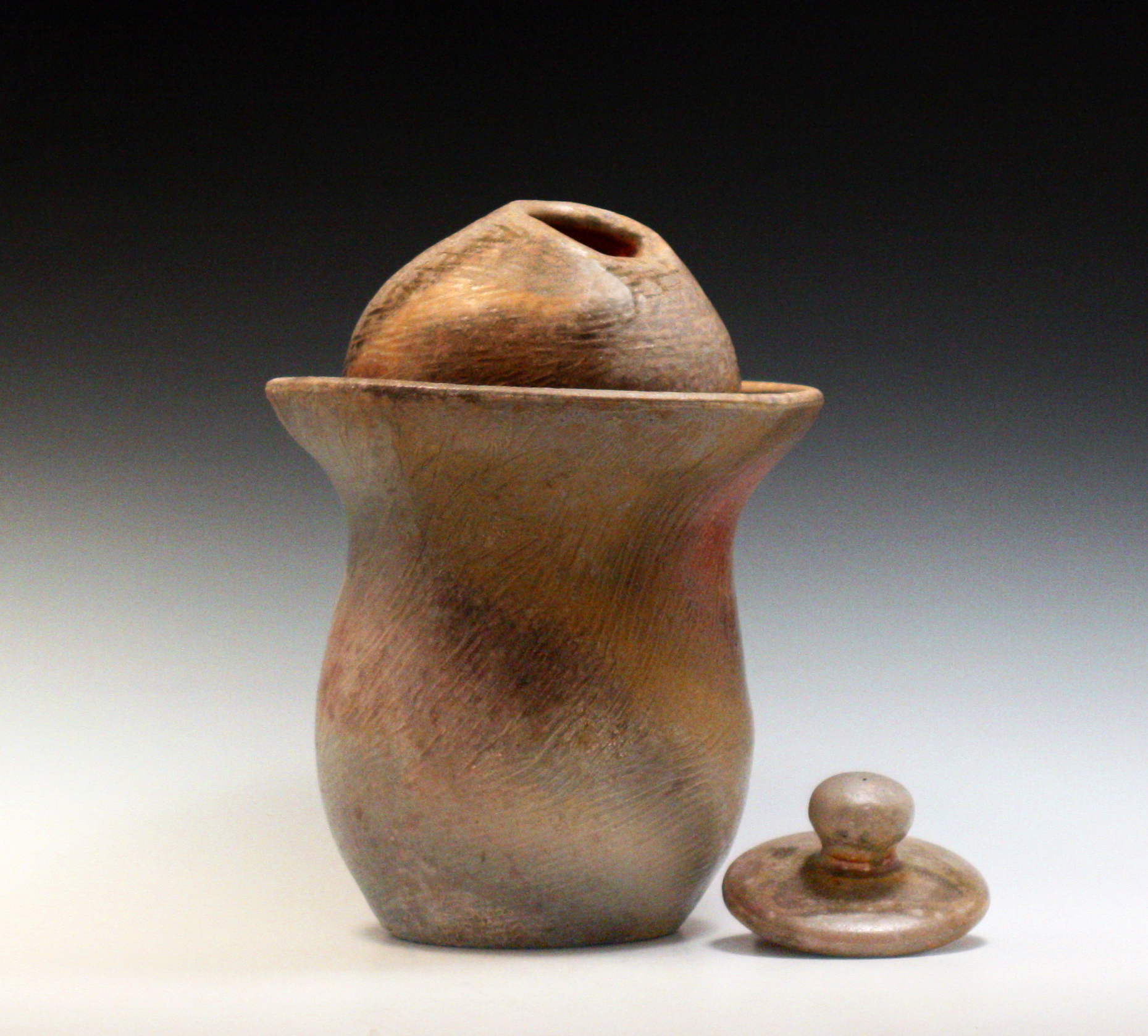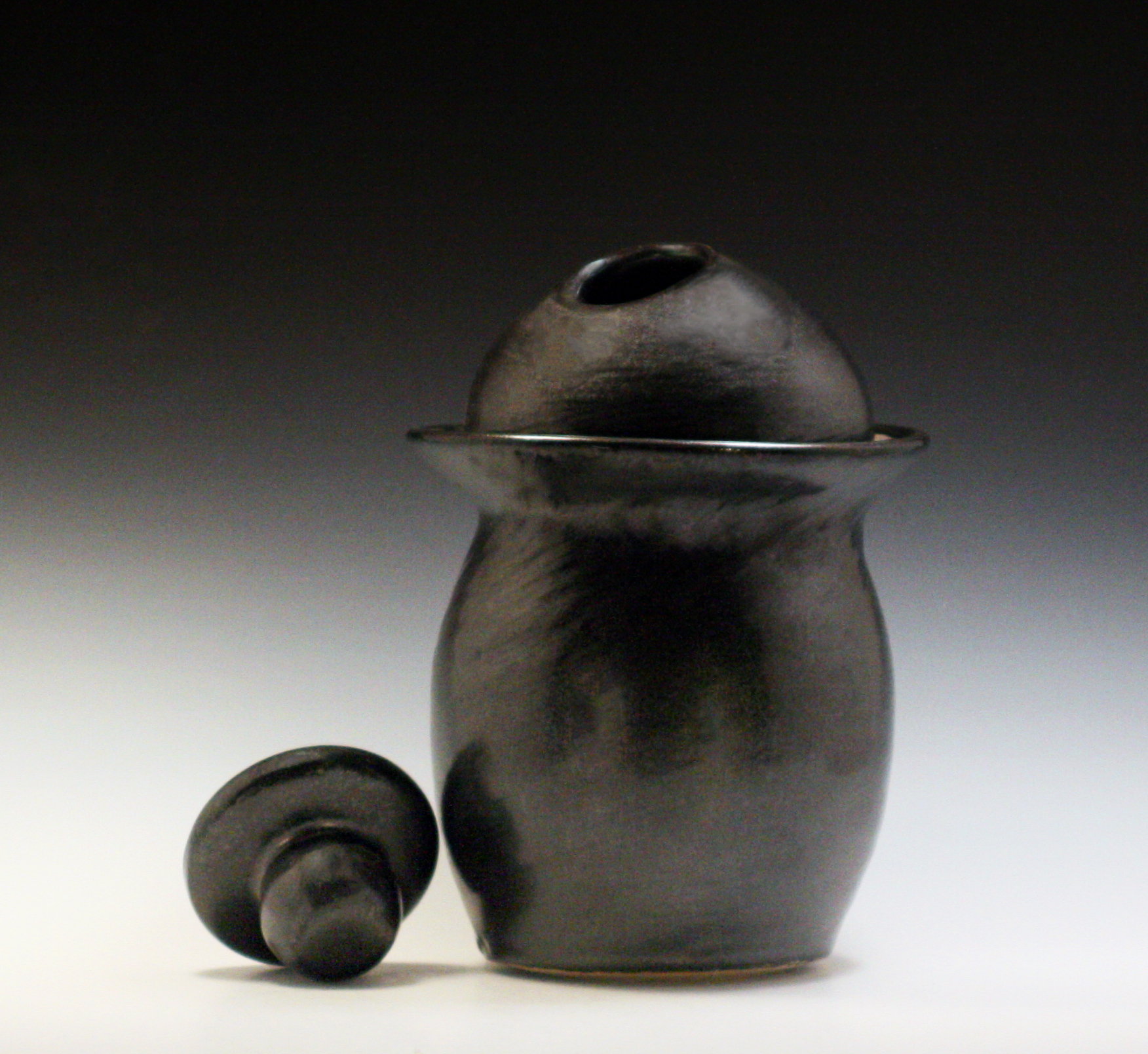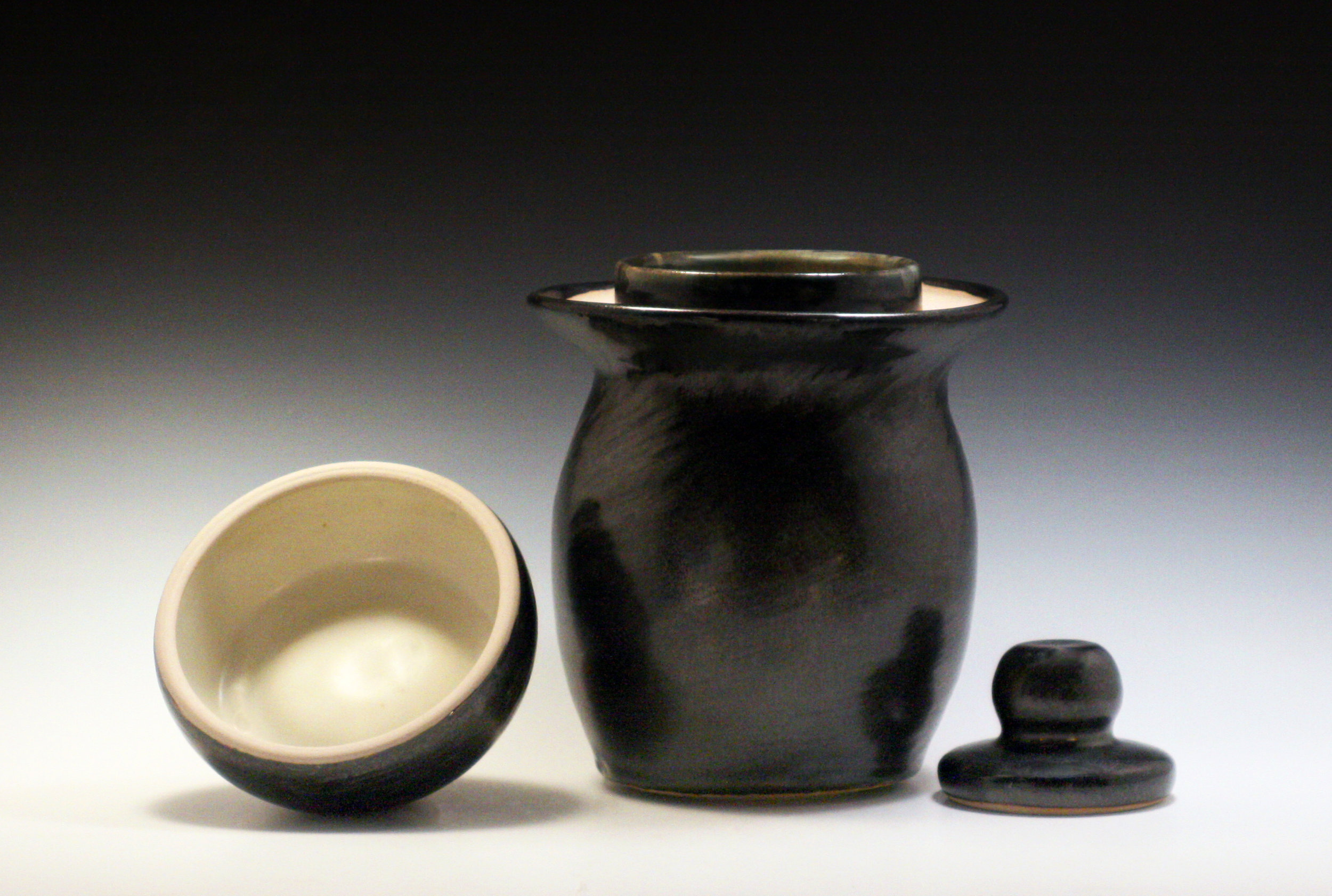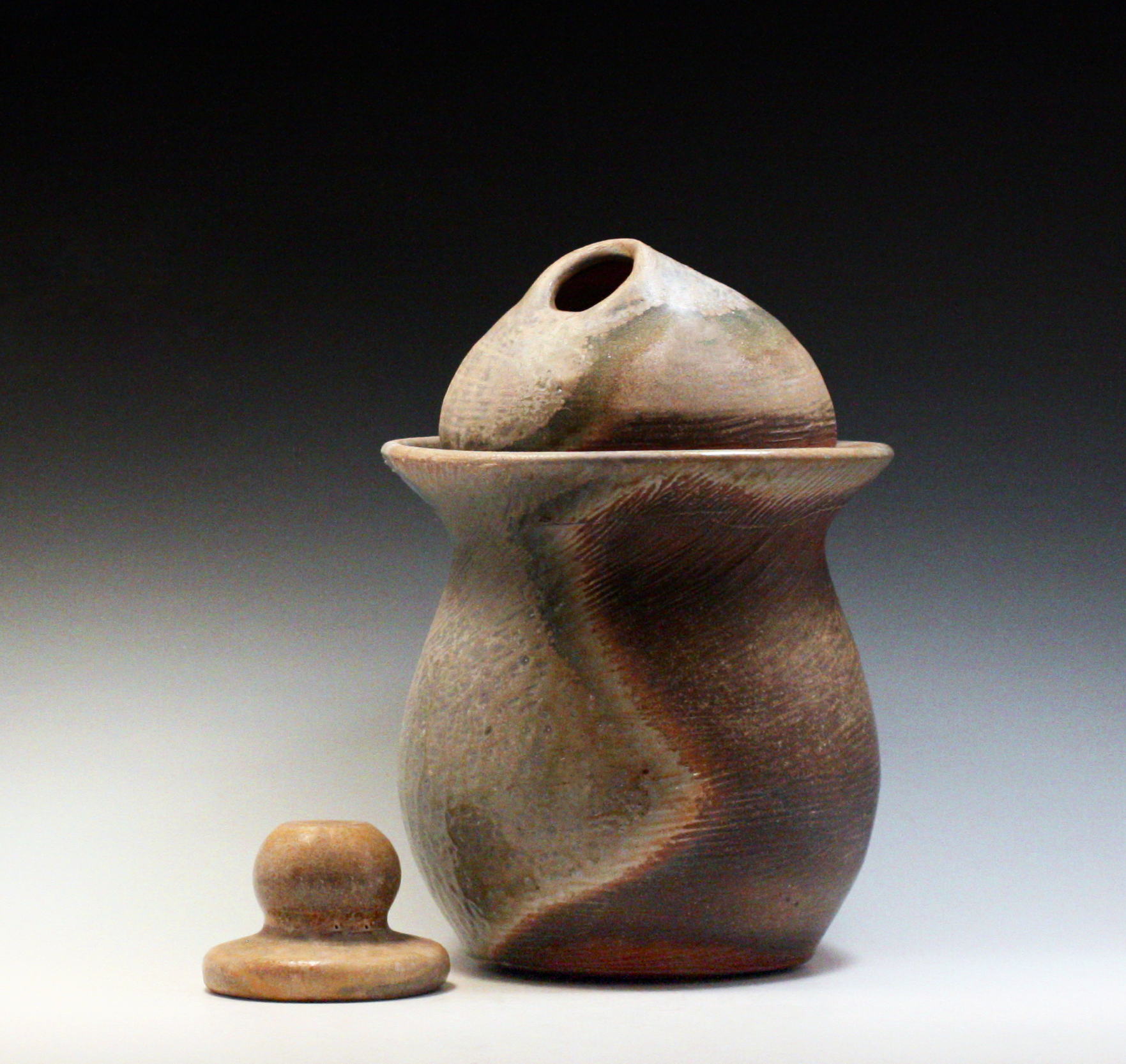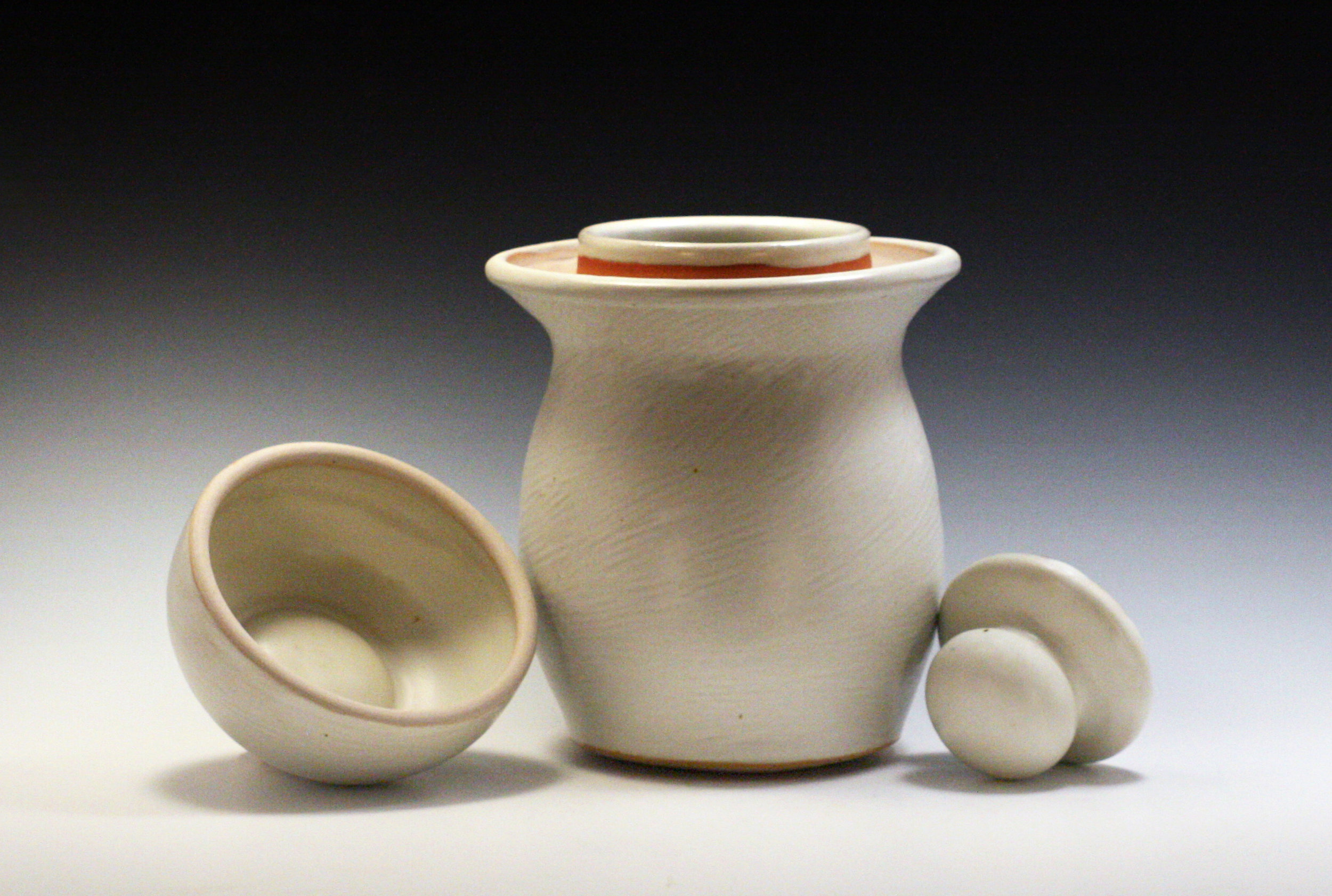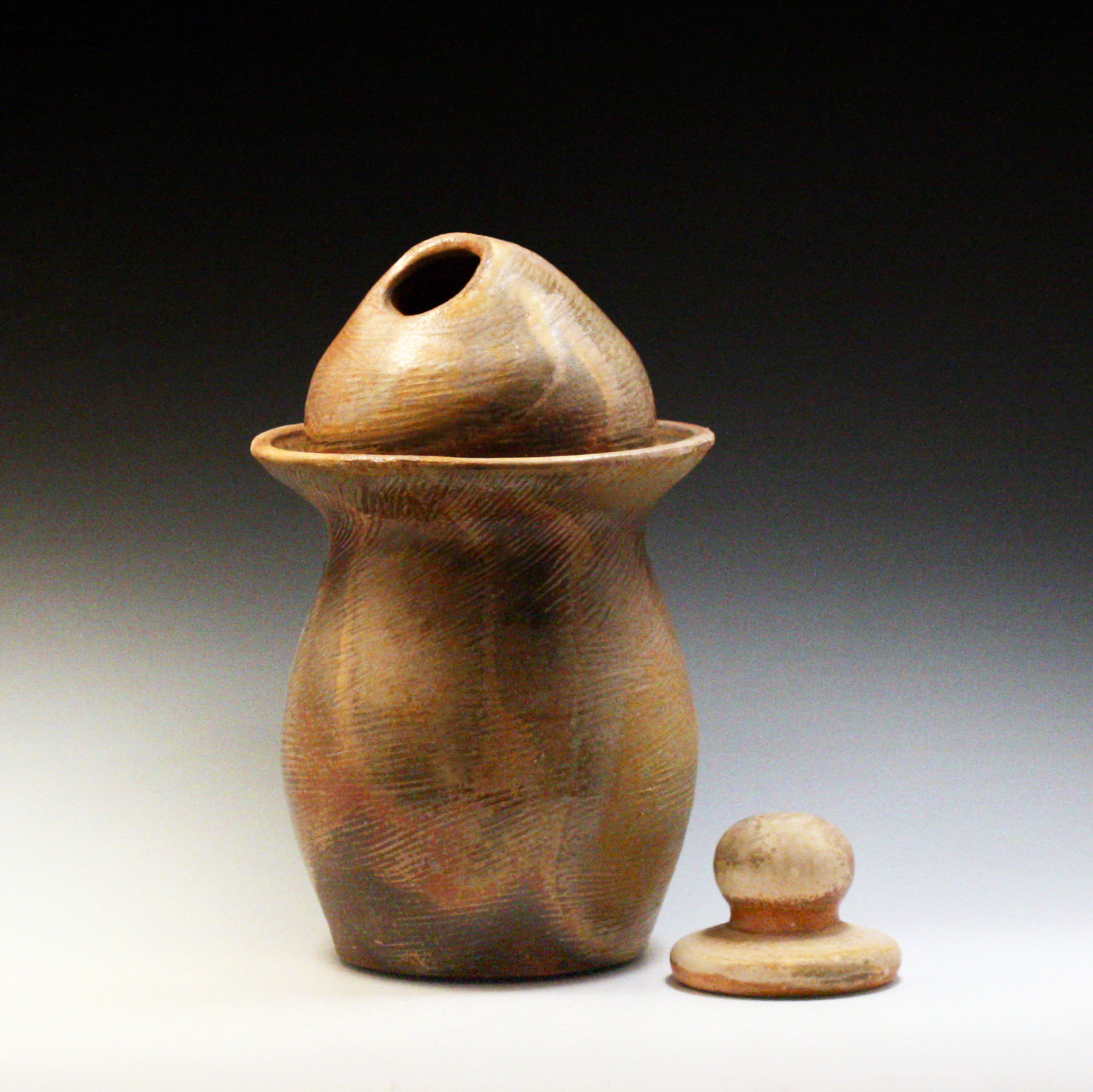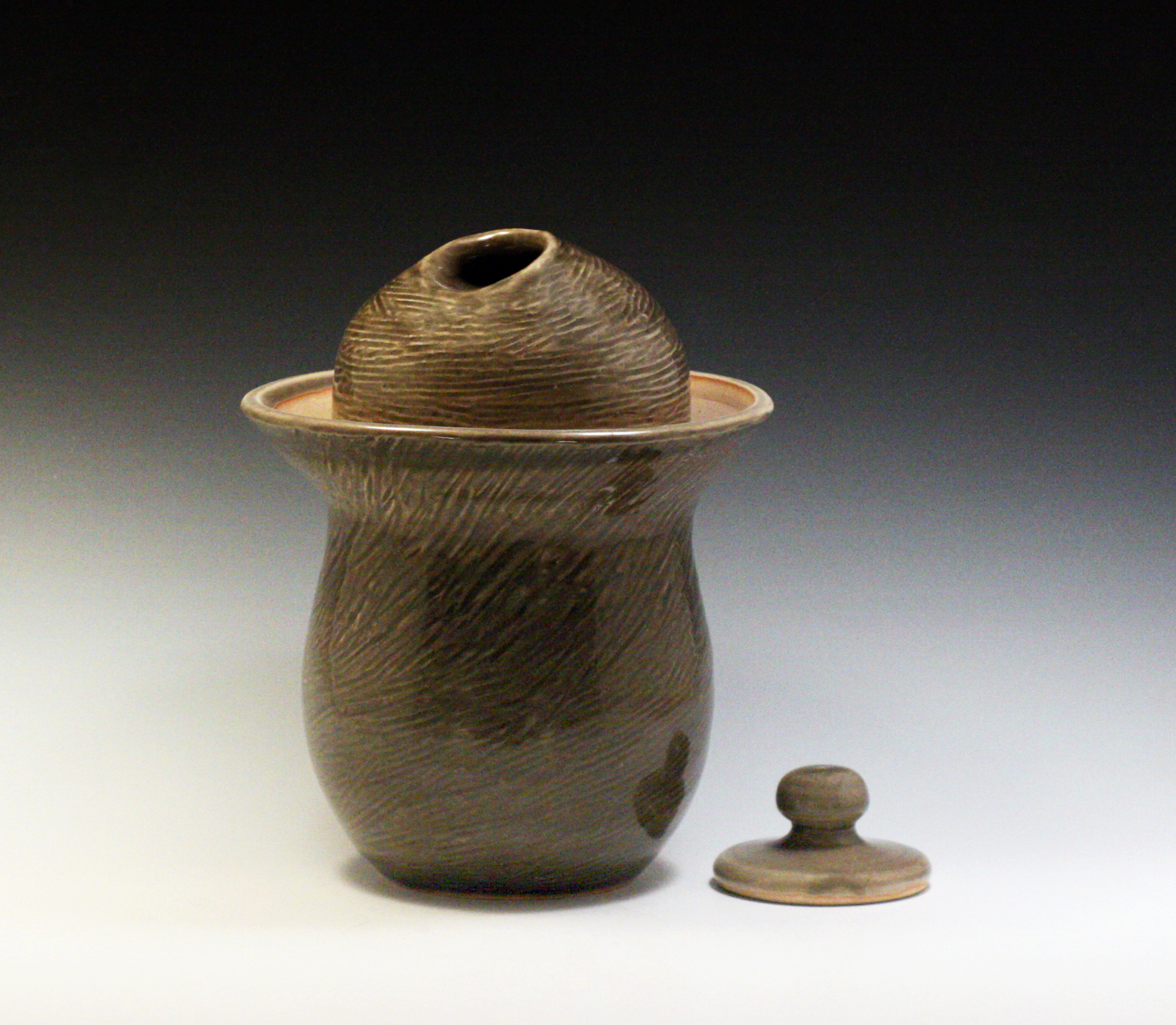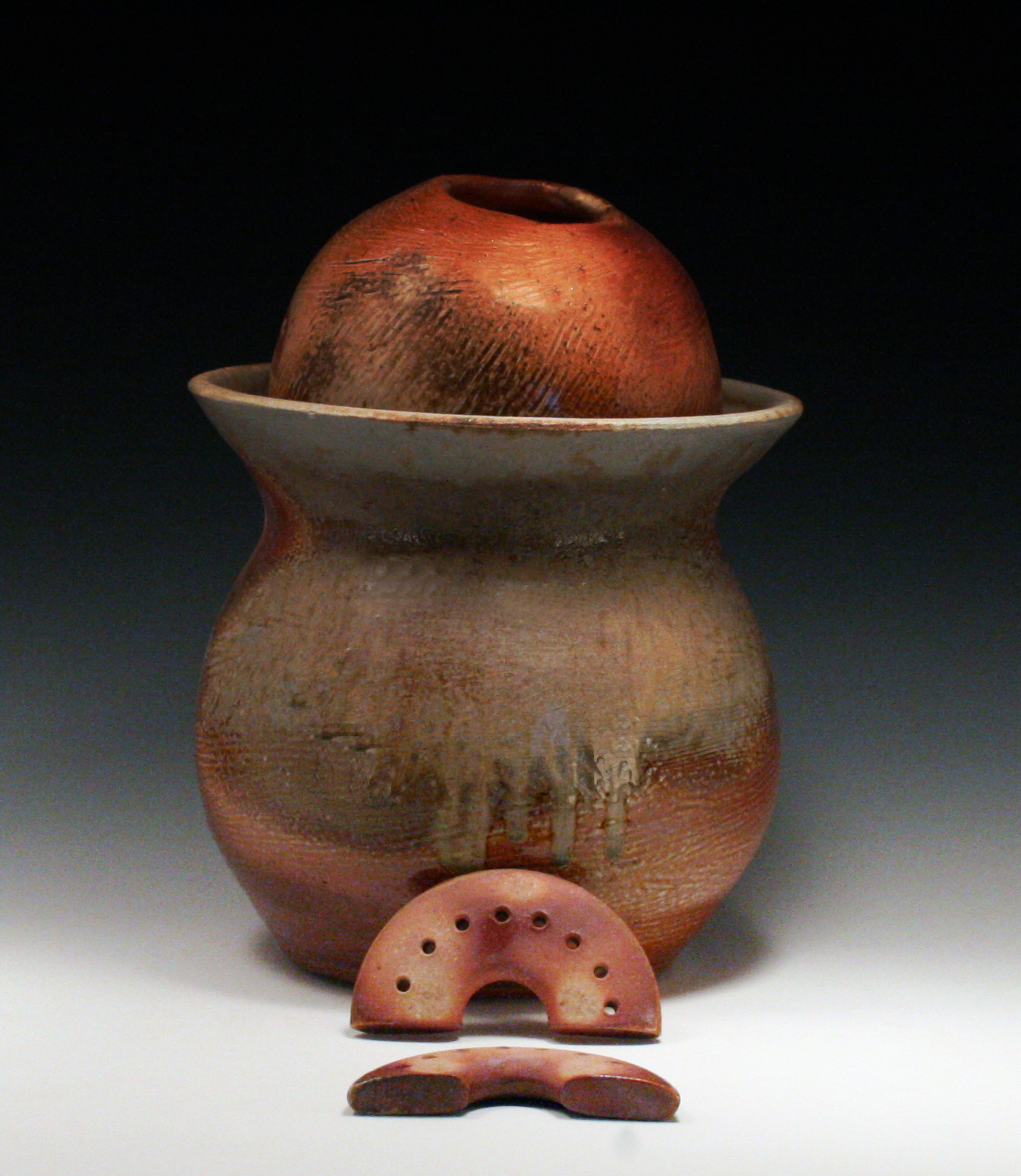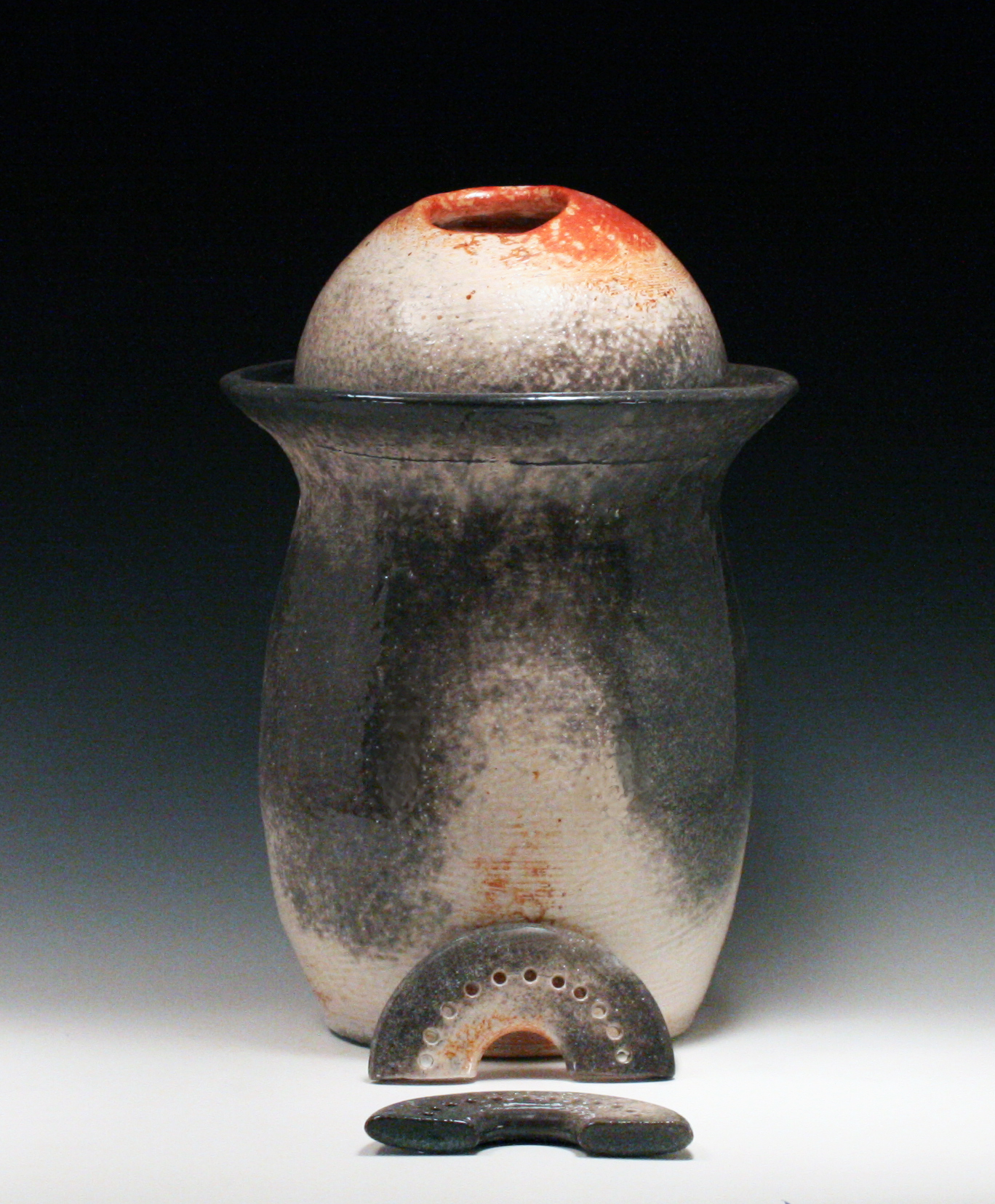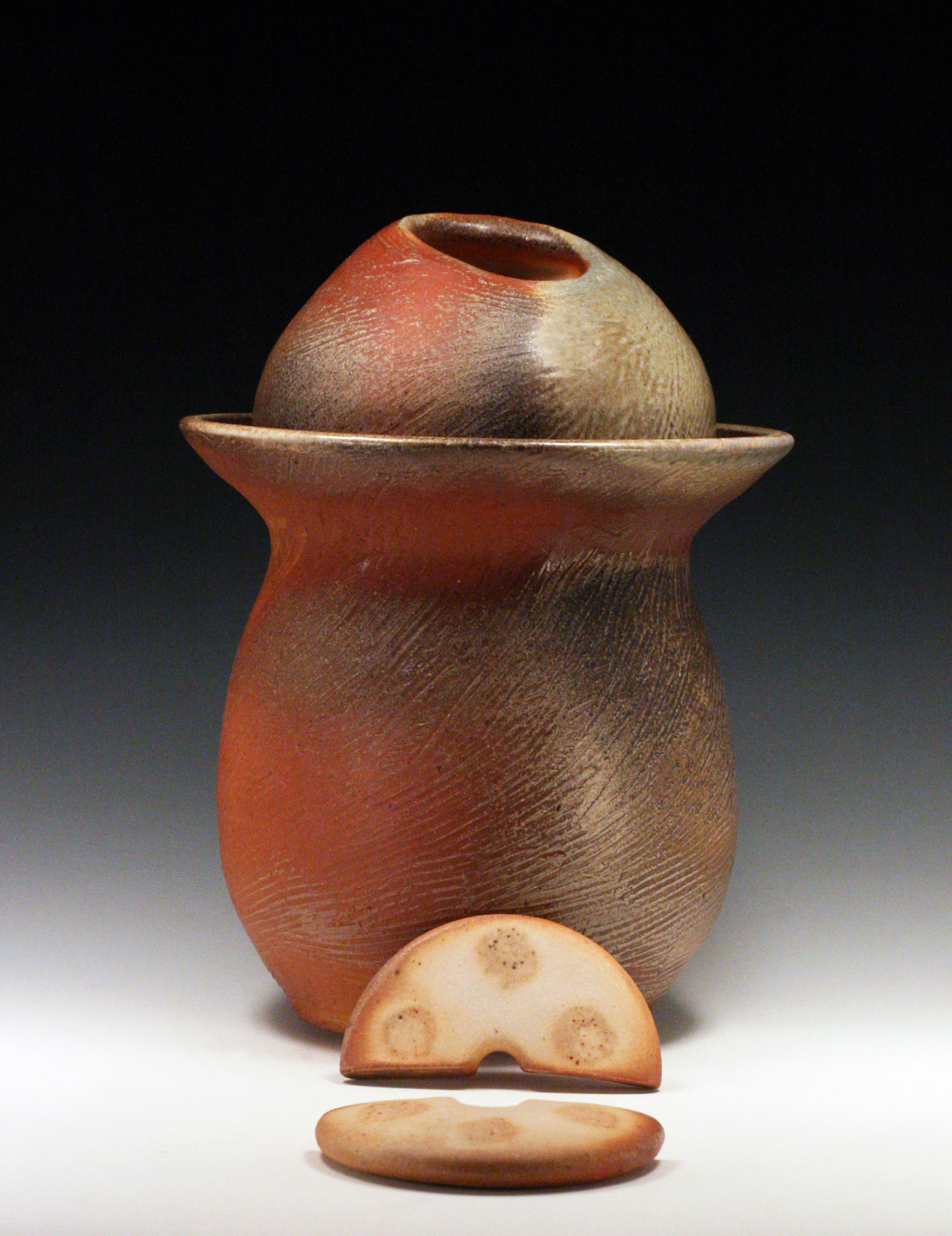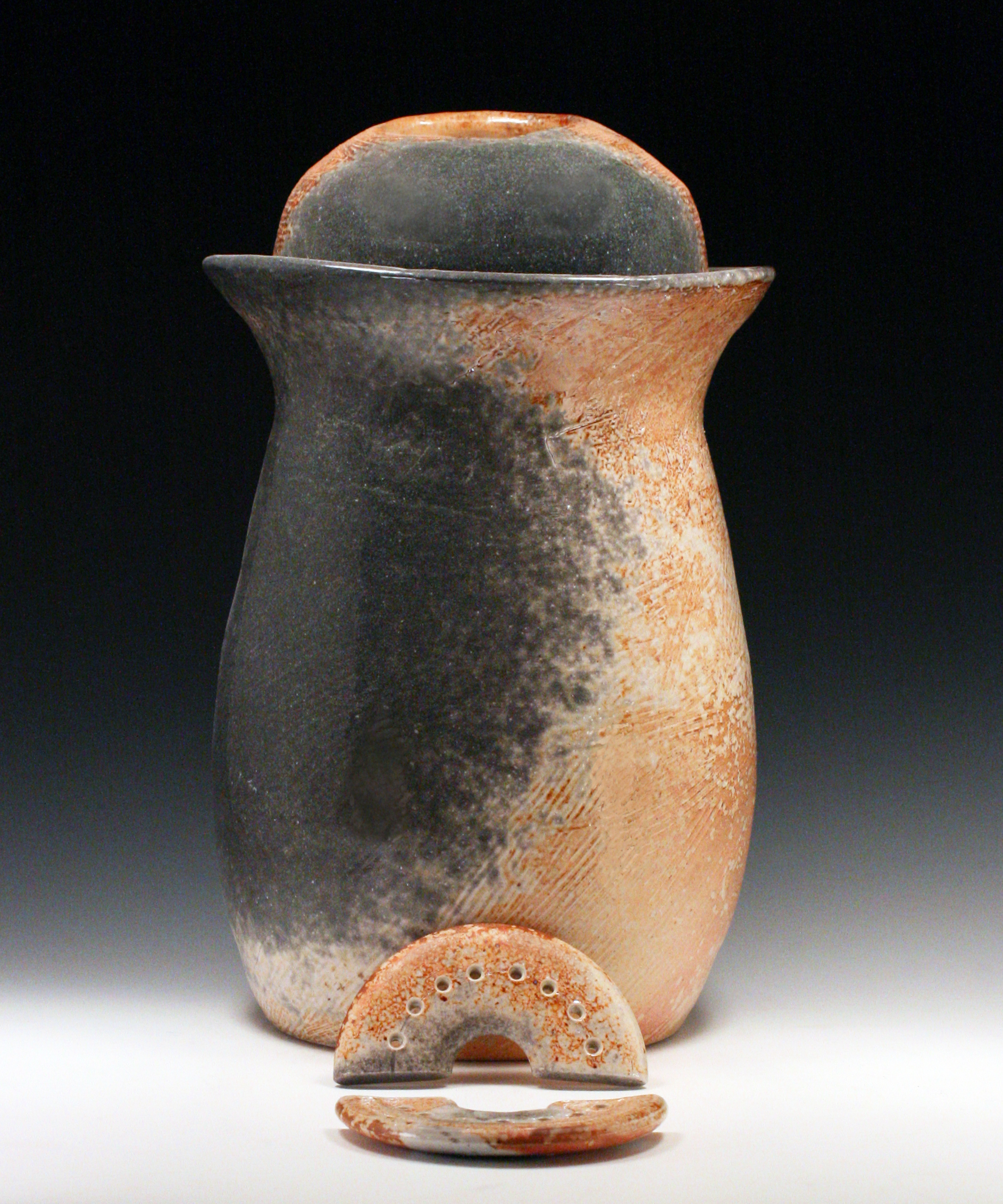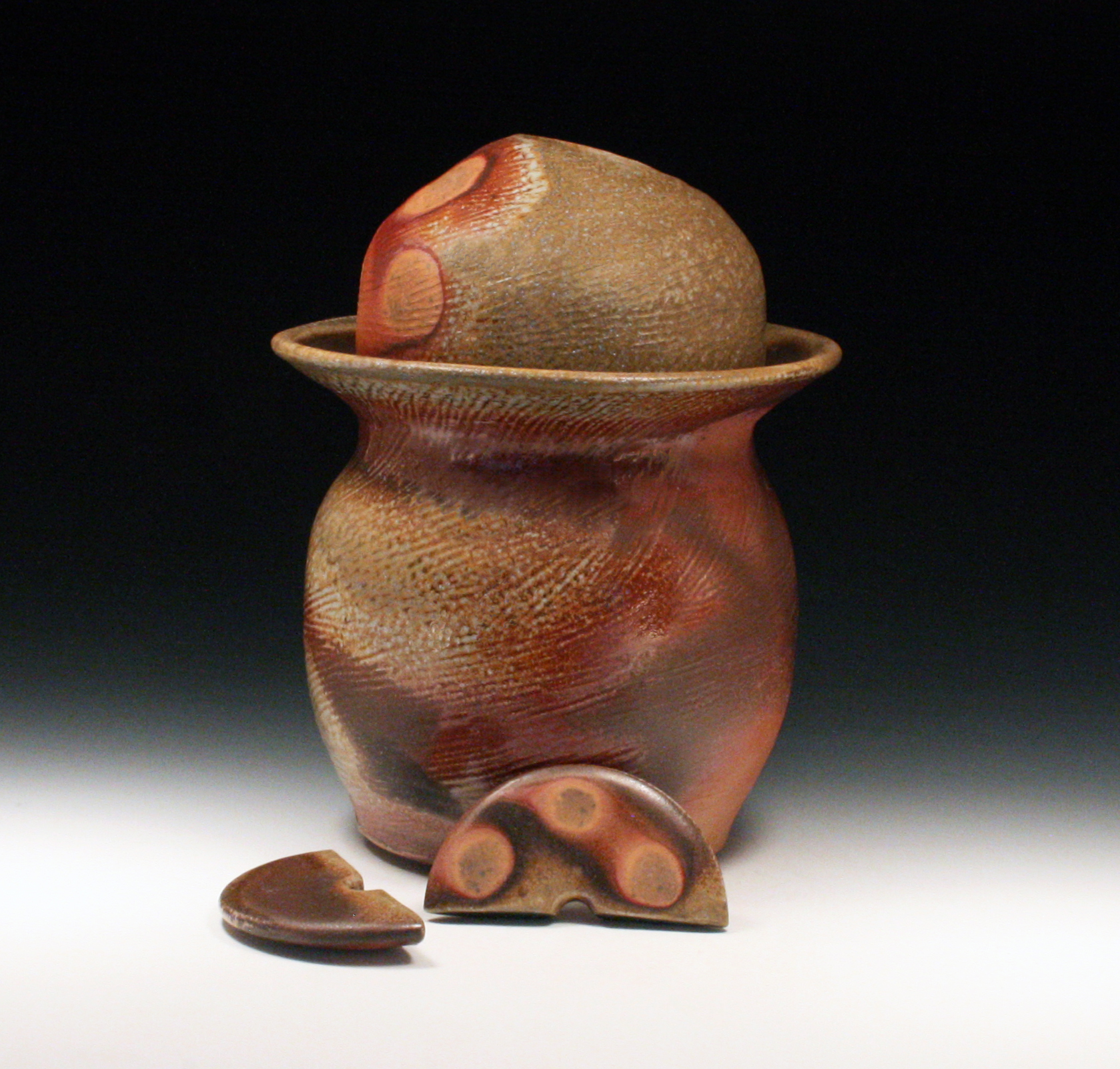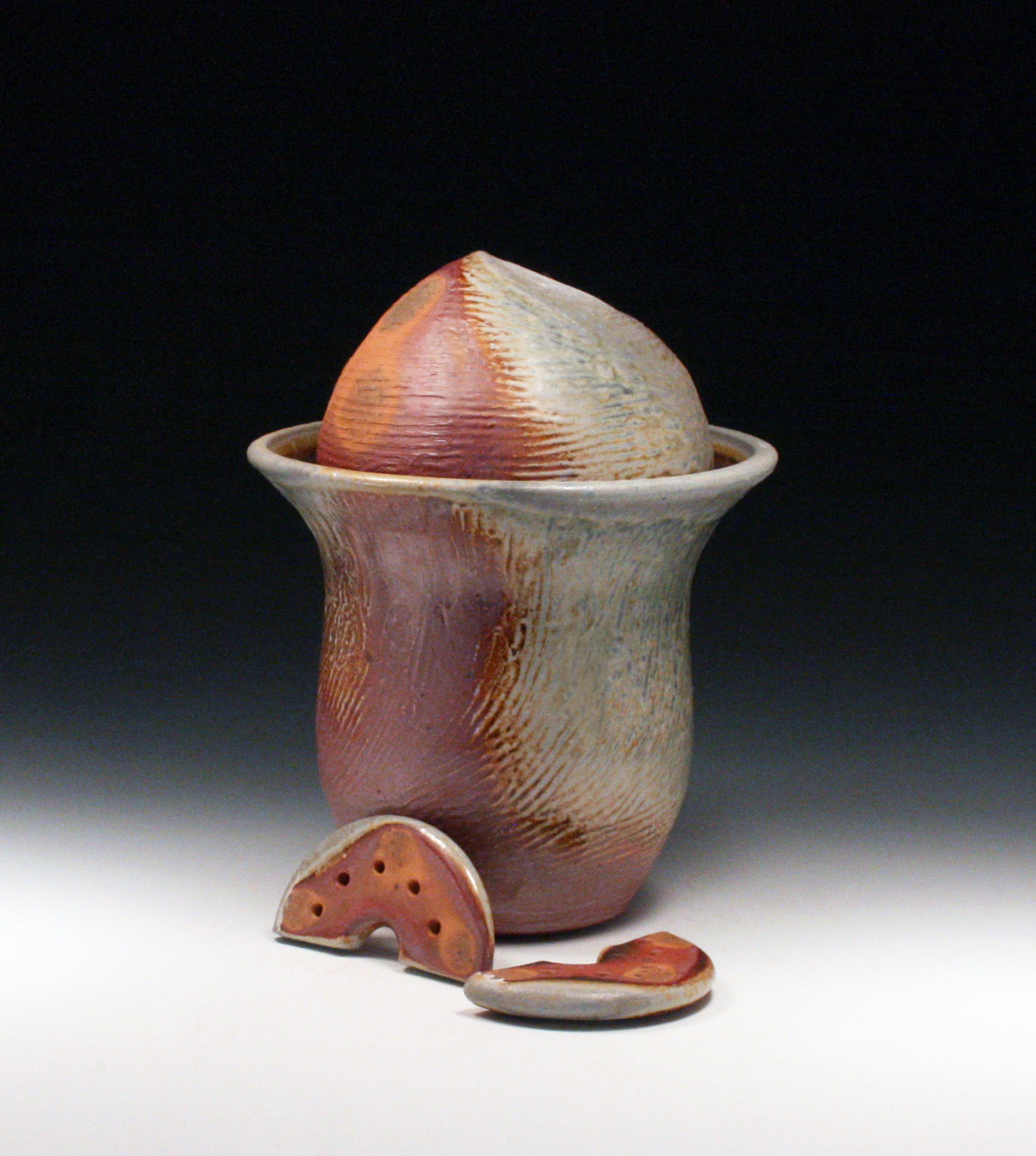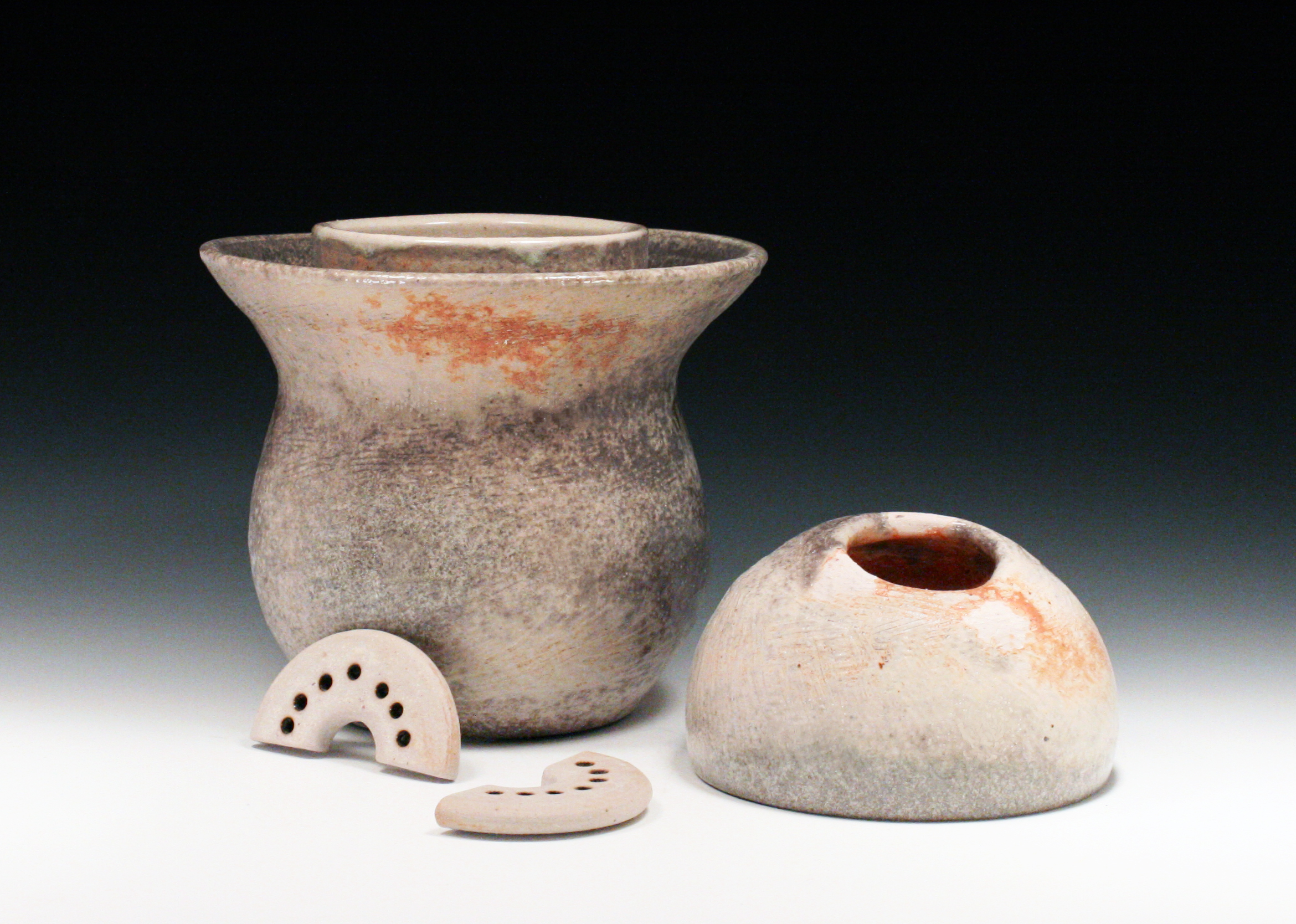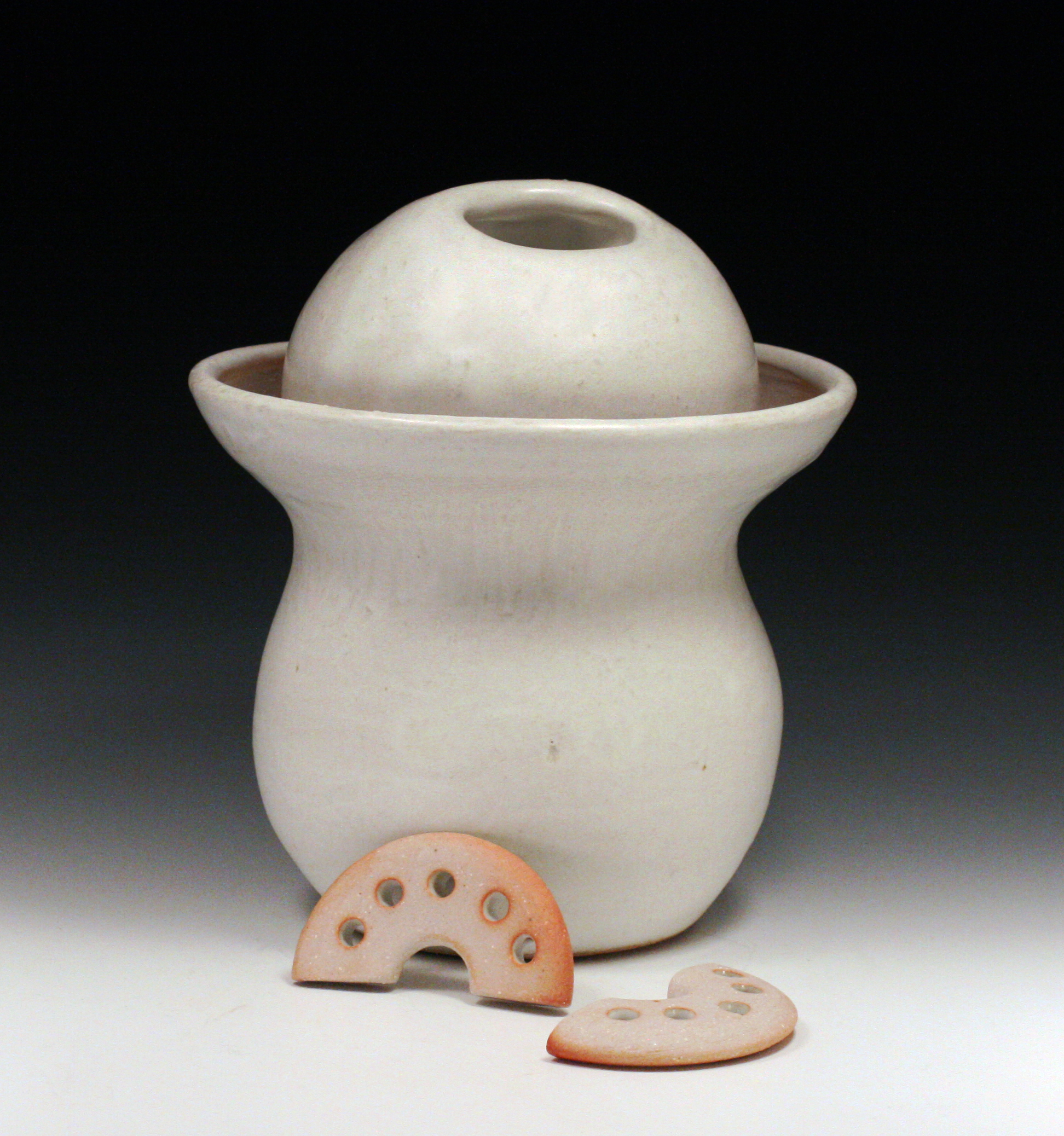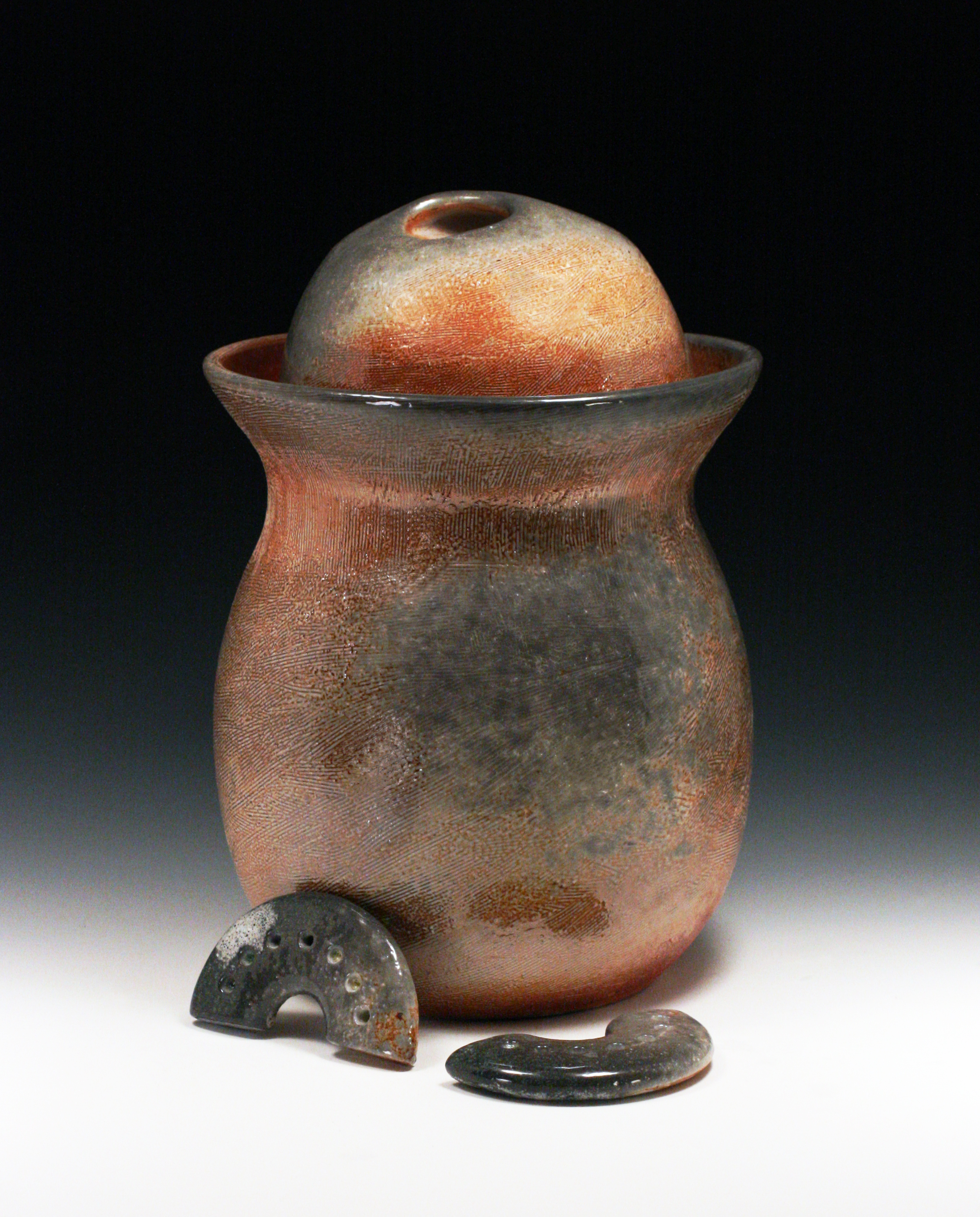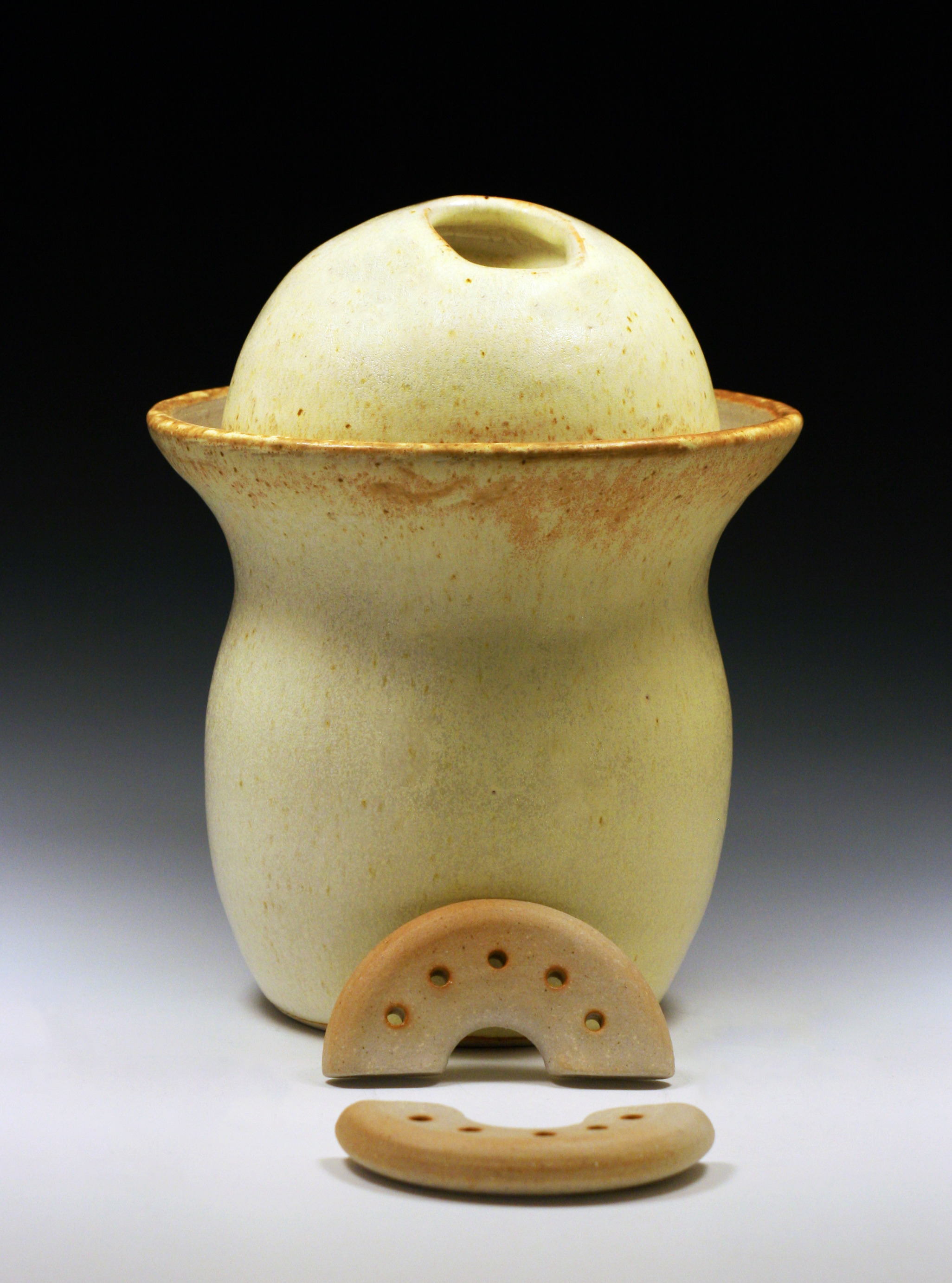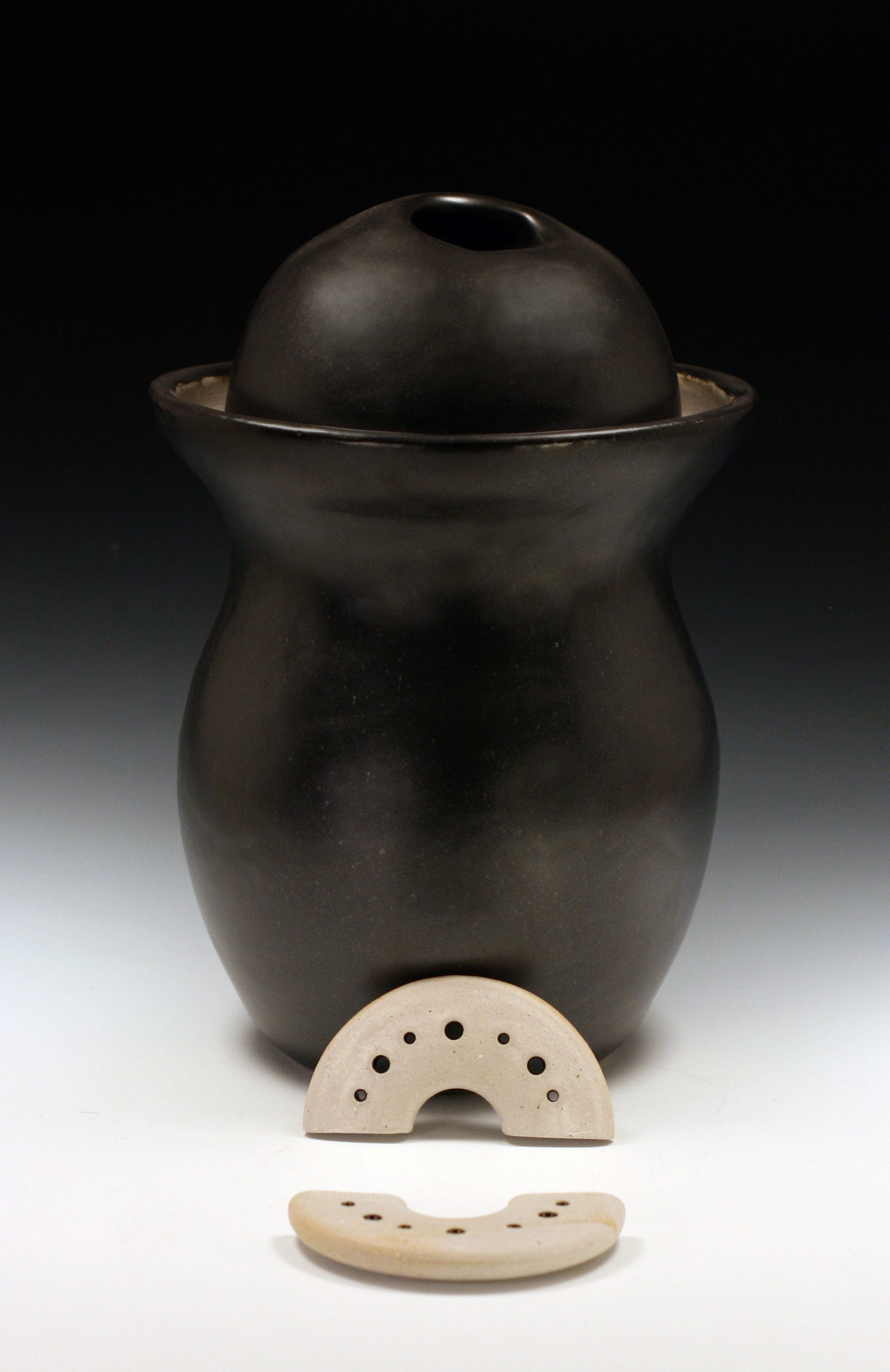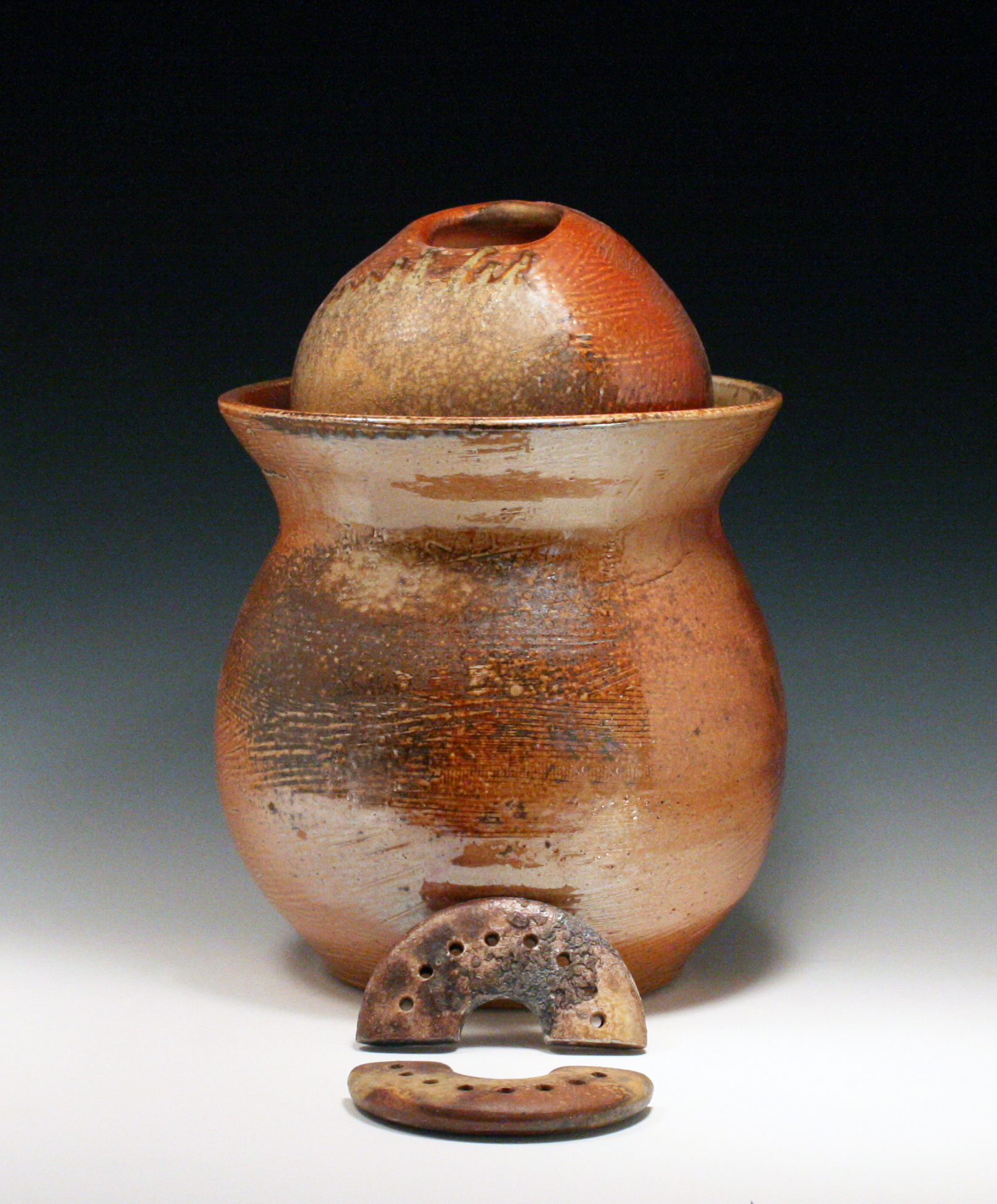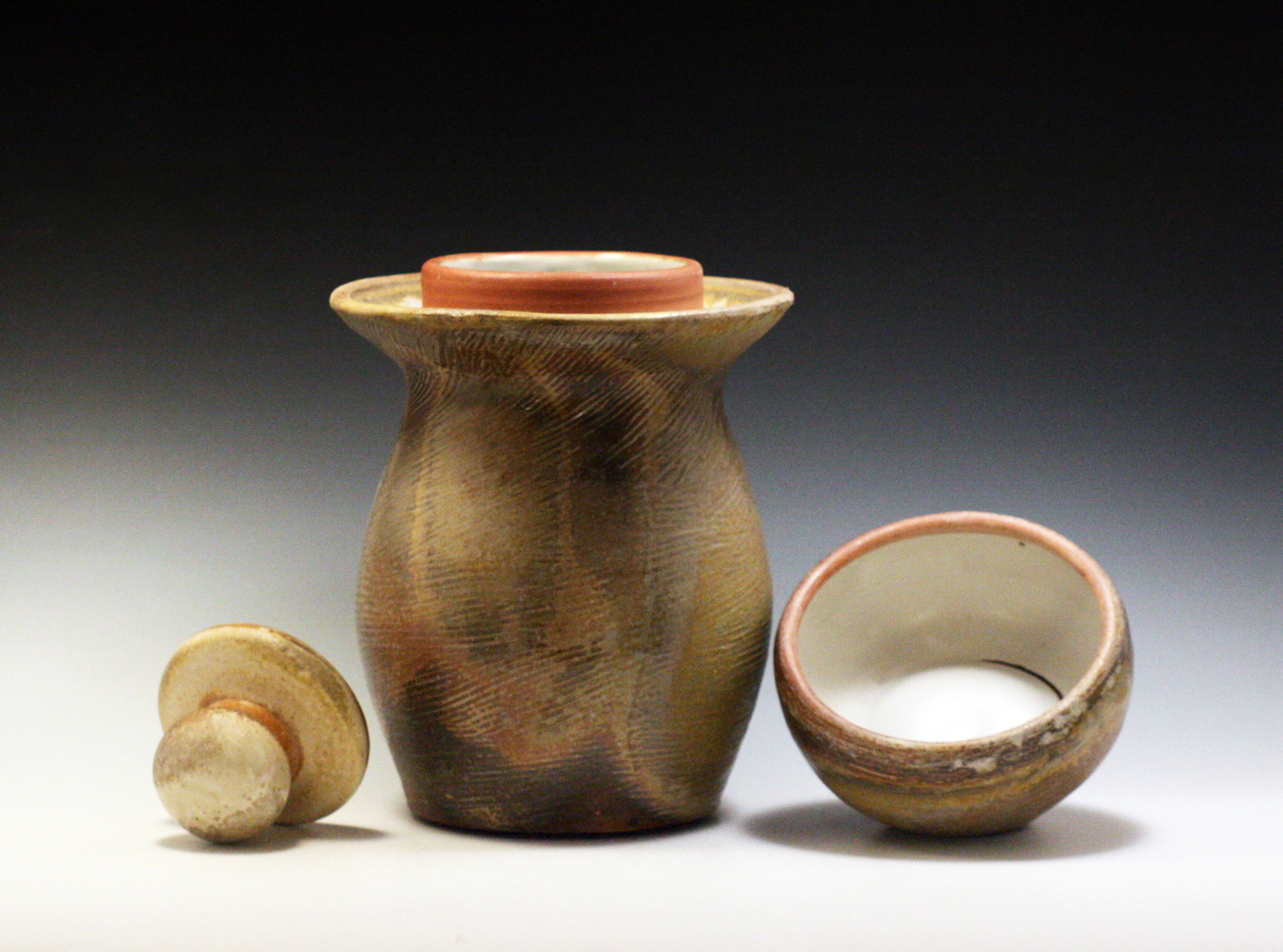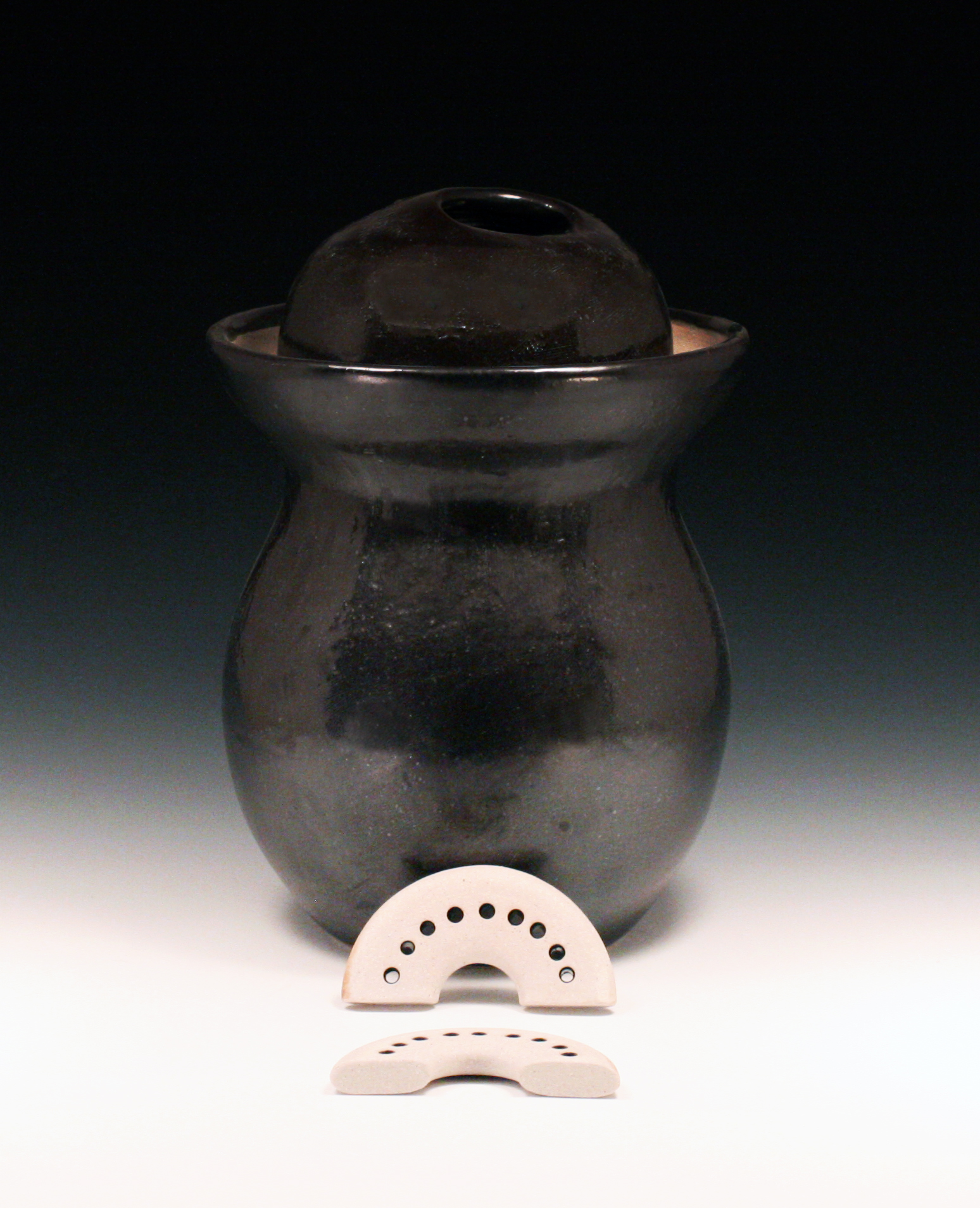Pickling is sexy! These are my take on the German-style fermenting crock, ideal for sauerkraut, kimchi and many other types of pickling and fermenting you may be interested in for gettin' yer probiotics on! They come with a custom-sized weight-stone (or stones) to hold down the food. The water trough at the top, with its inside lip higher than the outside, creates a seal to keep out mold spores.
If you are interested in purchasing a Fermenting Crock, or any of my other work, please visit my Etsy shop.
Also, here's a crash course in making a basic sauerkraut in your new Kraut Krock. At least, it's the way that I do it, and it seems to work out pretty well. Is it safe, you ask? Well, I haven't died yet.
Ingredients:
Fresh Vegetables
Salt
1. Obtain your veggies, to whatever degree of organic, GMO-free, gluten-free, ethically raised, grass-fed and free range that you like. I love growing mine, but also sometimes the best you can do is buying your organic produce. Don’t matter. Sauerkraut is usually cabbage-based, and it can be that simple - cabbage and salt - or you can add onions, garlic, ginger, carrots, radishes, turnips, peppers, parsnips and many others that suit your fancy.
2. Chop your veggies - I recommend longer, stringier, shreddier chopping. If you're doing carrots, the thinner the better.
3. Put each veggie in its own bowl, and also your salt into a small bowl that's easy to pinch out of. Line up your bowls in a semi-circle around your crock in the middle.
4. Put a handful or a pinch (as appropriate for even distribution) of everything into the bottom of the crock, sprinkle salt over the top.
5. Take your empty beer bottle (or wine or scotch or your baseball bat, whatever), and squish/press/grind/compress those veggies down like you mean it. Emit Viking roars as needed if it makes you crush mightier. This compression is important: it breaks the fibers in the cell walls of the veggies to free the juices and allow them to ferment. Also, the salt will draw out the juices, eventually making the veggies their own brine.
6. Repeat Steps 4 & 5 until your crock is full (leave at least 2" at the top). By the time it's full, the veggies should be swimming in their own brine, which will kill the bad things and let the good things grow.
7. Press the weight stone down firmly, so that you have an inch or so of brine over the top. If you have trouble keeping all the food under the stone, take a large leaf from a green (I use my collard greens because of the wide broad leaves that are bigger than my head!) and lay it over the top of the food, tucking in at the edges, and then press the weight stone down on top of that.
8. Sprinkle salt into the water trough at the top of the crock, replace the lid, and fill the trough with water. You might have to re-fill the trough once a week or so. The salt will help keep mold from forming in the trough.
9. Store in a cool, dark, dry place for at least 2 weeks. I've let kimchi sit for up to 2 months. The longer it sits, the more potent the flavour. You might also lift the lid every few days to check if the food has swelled up above its brine level. If it has, just push the stone back down again (with clean hands!).
After 2 weeks, start tasting to see if it's where you want it flavour-wise. Once there, you can refrigerate the whole crock, or take the food out and put it into mason jars. Refrigeration will more or less slow the fermentation down to a standstill, and it will keep for months.
10. While your crock-full of awesome is doing its thing, you occasionally will hear a happy high-pitched *blup!* This is good - gases are coming off the food and escaping through the water (though air can't get in), which means fermentation is happening. Which means you're winning! Now drink another beer and pat yourself on the back while you listen happily to your sauerkraut farting. Hippy.
Troubleshooting . . . because sometimes shit happens.
1. Mold.
Unfortunately, mold spores are everywhere, and sometimes, in spite of your best efforts, they get into your sauerkraut. The good news is that not all mold is the end of the world. There is a white filmy yeast that can form on top of the brine if the room temperature is too warm – especially in the summer for those of us who don’t have air conditioning. Good news! This white yeast won’t kill you. Bad news . . . it doesn’t taste good. If the kraut is submerged under a good amount of brine, you can take a spoon or a turkey baster and skim the white yeast off the surface. Afterwards, I recommend going ahead and jarring up the kraut and refrigerating it, as the white yeast will keep coming back if you don’t.
There is also green and black mold that can form. My formal advice is to throw the batch out – I hate wasting food and time too, but it isn’t worth getting sick. That said, I will say that if, again, the mold is only on top of the brine, I’ll just skim it off and jar up the kraut to go in the fridge (after taste-testing it). Like I said, I ain’t dead yet. But no suing me. I told you my formal stance first. I don’t mess around with mold that’s in the food itself.
If you have a batch go moldy, or if post-cleaning you get a funky smell out of your crock, I recommend cleaning it with a restaurant-grade bleach-water solution before you use it again. This is 1 tbsp of bleach per 1 gal of water. Soak the crock in the bleach water for about an hour, then rinse and wash thoroughly.
2. Brine level.
Some veggies, like bok choi, will be swimming in their own brine by the time you’re done with the smushy-smushy. Others, like red cabbage, will not, as they don’t contain as much water. If you fill your crock and the veggies are not submerged in their own bright green juicy chlorophyllic heaven, have no fear. You can make a brine super-ninja-easy by boiling 1 tbsp salt in 4 cups of water. Be sure to let it cool to room temperature – better yet, refrigerate it til it’s cold – before you add it to your kraut mix. Fill up so that the food under the weight stones is 1-2 inches below the top of the brine.
3. It’s not potent enough!
Let it sit longer. Trust me. Unless you have mold, then see above. Generally you want sauerkraut to ferment for at least two weeks.
4. It’s too potent!
Okay, Goldilocks. Don’t let it sit so long . . .
5. I pickled beets or something else that’s red, and after cleaning the crock out, I noticed red juice still seeping back into the crock.
Okay. So a feature of ceramics is sometimes the clay/glaze and the food will interact, even if the clay and glaze have reached their vitrification temperatures, which all my crocks have. I line all my crocks with a non-toxic white satin matte glaze, so there is no danger at all of poisoning yourself. There also isn’t any danger from the food, provided it doesn’t get moldy. This is similar to teapots that get seasoned over time from steeping the same kind of tea over and over again. The worst that should happen with your pickling is old batches flavouring new batches, which you might or might not want, if you’re switching from one kind of pickle to another. One solution to this is to have more than one crock (I mean, I’m biased, I kinda LOVE this solution).
Another solution, also valid if you start getting a funky smell or mold, is to treat your crock with a restaurant-grade bleach water solution. This is 1 tbsp of bleach per 1 gal of water. Soak the crock in the bleach solution for about an hour, then rinse and wash thoroughly. Then use as normal!
If you have any doubt at all concerning mold or funky smells, my official and in-practice suggestion is to go the bleach-water route.
6. I feel like you’re just adding items here to make your troubleshooting list seem More Important.
You got me. Now get off the damn internet and go pickle your stuff.
